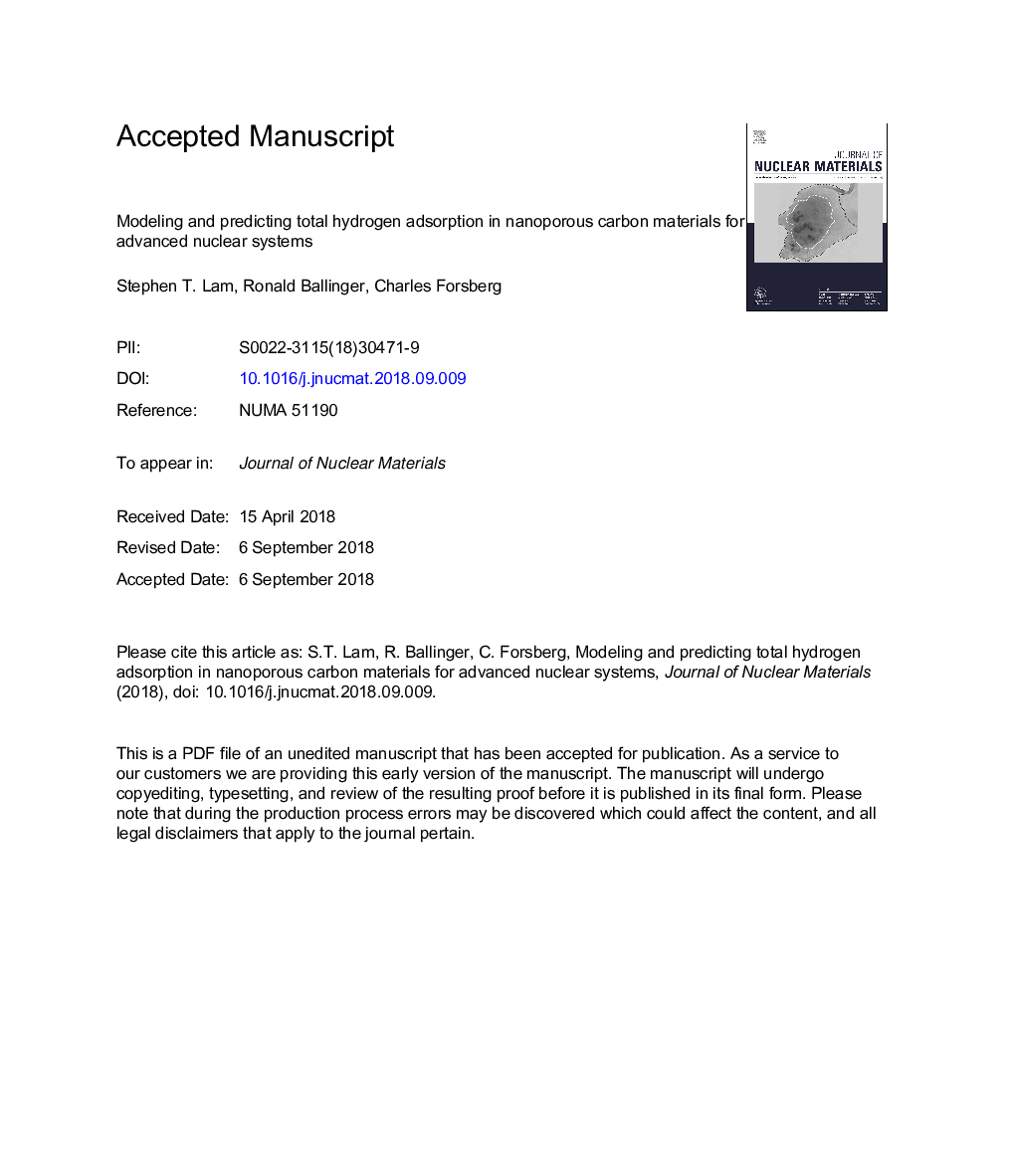| کد مقاله | کد نشریه | سال انتشار | مقاله انگلیسی | نسخه تمام متن |
|---|---|---|---|---|
| 10645149 | 999922 | 2018 | 48 صفحه PDF | دانلود رایگان |
عنوان انگلیسی مقاله ISI
Modeling and predicting total hydrogen adsorption in nanoporous carbon materials for advanced nuclear systems
ترجمه فارسی عنوان
مدل سازی و پیش بینی جذب کل هیدروژن در مواد کربن نانوپور برای سیستم های پیشرفته هسته ای
دانلود مقاله + سفارش ترجمه
دانلود مقاله ISI انگلیسی
رایگان برای ایرانیان
کلمات کلیدی
موضوعات مرتبط
مهندسی و علوم پایه
مهندسی انرژی
انرژی هسته ای و مهندسی
چکیده انگلیسی
The retention of hydrogen in a variety of disordered carbon materials including graphene nanoplatelets and amorphous carbon was measured by volumetric adsorption and modeled using thermodynamic methods. To date, high temperature hydrogen adsorption research in carbon has predominately focused on graphite used as plasma-facing materials in fusion systems, moderators in high temperature gas reactors, and fuel components in molten-salt cooled reactors. Tritium, a hydrogen isotope that is produced in these systems, adsorbs on carbon surfaces that could be used effectively as sinks to remove tritium. Since hydrogen has chemical similarity to tritium, it can be used as a surrogate to simplify experimental studies, greatly expediting materials exploration. Thus, an understanding and prediction of hydrogen behavior on carbon materials is essential for evaluation of performance and safety of present and future reactor designs. Chemisorption experiments were conducted on 9 different materials with a range of surface areas, pore volumes, and pore size distributions. The results showed that carbons with higher surface area and pore volume exhibit higher hydrogen adsorption, which is attributed to larger quantities of active sites. Further, hydrogen adsorption was found to increase in materials with greater micropore (<10â¯Ã
) surface area, which was interpreted as being a result of in-pore trapping. In contrast to previous studies that assumed a single isotherm, four isotherms were examined including two- and three-parameter methods and homo- and heterogeneous surface methods-the Langmuir, Temkin, Freundlich and Sips isotherms. Analyses of non-linear models by ordinary least squares and Marquardt's percent standard deviation minimization were performed. It was found that constant order homogeneous models that have been used in the past lack the ability to describe pathways and reactions steps that occur. Further, it was found that Sips isotherm consistently provided the best minimization of error and most accurate prediction.
ناشر
Database: Elsevier - ScienceDirect (ساینس دایرکت)
Journal: Journal of Nuclear Materials - Volume 511, 1 December 2018, Pages 328-340
Journal: Journal of Nuclear Materials - Volume 511, 1 December 2018, Pages 328-340
نویسندگان
Stephen T. Lam, Ronald Ballinger, Charles Forsberg,
